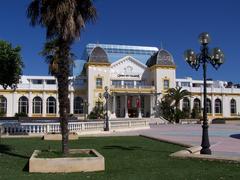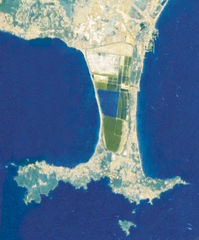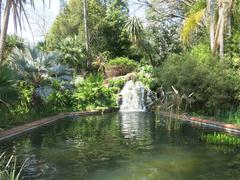Visiting Hours, Tickets, and History of Cité Gréco-Romaine d’Olbia-Pomponiana, Hyères
Published on: 20/07/2024
Introduction to Cité Gréco-Romaine d’Olbia-Pomponiana
Welcome to the comprehensive guide for visiting the Cité gréco-romaine d’Olbia-Pomponiana in Hyères, France. This ancient site, dating back to the 4th century BCE, offers a unique opportunity to explore the remnants of a civilization that served as a bridge between Greek and Roman cultures. Originally established by Greeks from Massalia (modern-day Marseille) and later transformed under Roman rule, Olbia-Pomponiana stands as a testament to the rich historical and cultural exchanges of the Mediterranean world. This guide will provide you with detailed information on the site’s history, visitor tips, ticket prices, and nearby attractions, making it an invaluable resource for anyone planning a visit. Whether you’re a history enthusiast or a casual traveler, the Cité gréco-romaine d’Olbia-Pomponiana promises a captivating journey through time (French Ministry of Culture, Hyères Tourism).
Contents
- Introduction
- Historical Background
- Origins and Establishment
- Greek Period
- Roman Conquest and Transformation
- Economic and Strategic Importance
- Decline and Abandonment
- Archaeological Discoveries
- Preservation and Public Access
- Significance in Historical Context
- Visitor Information
- Visiting Hours
- Ticket Prices
- Guided Tours
- Special Events
- Photographic Spots
- Travel Tips and Nearby Attractions
- Accessibility
- Nearby Attractions
- Travel Tips
- FAQ
- Visiting Hours
- Ticket Prices
- Guided Tours
- Special Events
- Nearby Attractions
- Conclusion
Exploring the Cité gréco-romaine d’Olbia-Pomponiana - Visiting Hours, Tickets, and Historical Insights
Historical Background
Origins and Establishment
The Cité gréco-romaine d’Olbia-Pomponiana was originally established by the Greeks from the colony of Massalia (modern-day Marseille) as a fortified settlement. The name “Olbia” means “the blessed” or “the prosperous” in Greek. The strategic location of Olbia on the Mediterranean coast was chosen for its natural harbor and fertile lands, ideal for agriculture and trade.
Greek Period
During the Greek period, Olbia served as a crucial outpost for the Massaliotes, facilitating trade and cultural exchange between the Greek world and the indigenous Ligurian tribes. The city was fortified with robust walls, parts of which are still visible today. The layout of the city followed typical Greek urban planning, with a grid pattern of streets and a central agora.
Roman Conquest and Transformation
In 125 BCE, the Romans conquered the region, and Olbia became part of the Roman province of Gallia Narbonensis, renamed Pomponiana. Under Roman rule, the city underwent significant transformations, including expanded fortifications, new public buildings, and improved infrastructure like roads and aqueducts.
Economic and Strategic Importance
Olbia-Pomponiana thrived as a commercial hub due to its strategic location along Mediterranean trade routes. The city exported local products such as wine, olive oil, and fish sauce (garum). Archaeological excavations have uncovered numerous amphorae, indicating the scale of trade conducted from the port.
Decline and Abandonment
The decline of Olbia-Pomponiana began in the late Roman period, around the 3rd century CE, due to economic difficulties, barbarian invasions, and the general decline of the Western Roman Empire. By the 5th century CE, the city was largely abandoned.
Archaeological Discoveries
Systematic archaeological excavations at Olbia-Pomponiana began in the 19th century and have continued to the present day, revealing a wealth of information about the city’s layout, architecture, and daily life.
Preservation and Public Access
Today, the site of Olbia-Pomponiana is managed by the French Ministry of Culture and is open to the public. Efforts have been made to preserve the ruins and make them accessible to visitors through informative panels and guided tours.
Significance in Historical Context
The historical significance of Olbia-Pomponiana lies in its role as a cultural and economic bridge between the Greek and Roman worlds. The well-preserved ruins offer a unique glimpse into the urban planning and daily life of ancient Mediterranean civilizations.
Visitor Information
Visiting Hours
The Cité gréco-romaine d’Olbia-Pomponiana is open to visitors from Tuesday to Sunday, 10 AM to 6 PM. It is closed on Mondays and public holidays.
Ticket Prices
Tickets can be purchased at the entrance or online through the official French Ministry of Culture website. General admission is €10, with discounts available for students, seniors, and groups.
Guided Tours
Guided tours are available in multiple languages and can be booked in advance. These tours provide deeper insights into the site’s history and significance.
Special Events
The site regularly hosts special events, including historical reenactments, lectures, and workshops. Check the official website for the latest updates and event schedules.
Photographic Spots
Some of the best photographic spots include the remains of the city walls, the agora, and the public baths. Visitors are encouraged to capture the stunning views of the Mediterranean coast.
Travel Tips and Nearby Attractions
Accessibility
The site is accessible to visitors with mobility issues, with ramps and paved pathways throughout the main areas.
Nearby Attractions
While in Hyères, consider visiting other historical sites such as the Villa Noailles, the Tour des Templiers, and the Parc Olbius Riquier.
Travel Tips
- Wear comfortable walking shoes as the terrain can be uneven.
- Bring water and sun protection, especially during the summer months.
- Check the weather forecast and dress accordingly.
FAQ
What are the Cité gréco-romaine d’Olbia-Pomponiana visiting hours?
The site is open from Tuesday to Sunday, 10 AM to 6 PM. It is closed on Mondays and public holidays.
How much do tickets to Cité gréco-romaine d’Olbia-Pomponiana cost?
General admission is €10, with discounts available for students, seniors, and groups.
Are guided tours available?
Yes, guided tours are available in multiple languages and can be booked in advance.
Are there special events at the site?
Yes, the site hosts special events such as historical reenactments, lectures, and workshops. Check the official website for the latest updates.
What are some nearby attractions?
Nearby attractions include Villa Noailles, Tour des Templiers, and Parc Olbius Riquier.
Conclusion
The Cité gréco-romaine d’Olbia-Pomponiana offers a fascinating glimpse into the ancient Greek and Roman worlds. Whether you’re a history enthusiast or simply looking for a unique travel experience, a visit to this site is highly recommended. For more detailed information and to plan your visit, check out the official French Ministry of Culture website.








